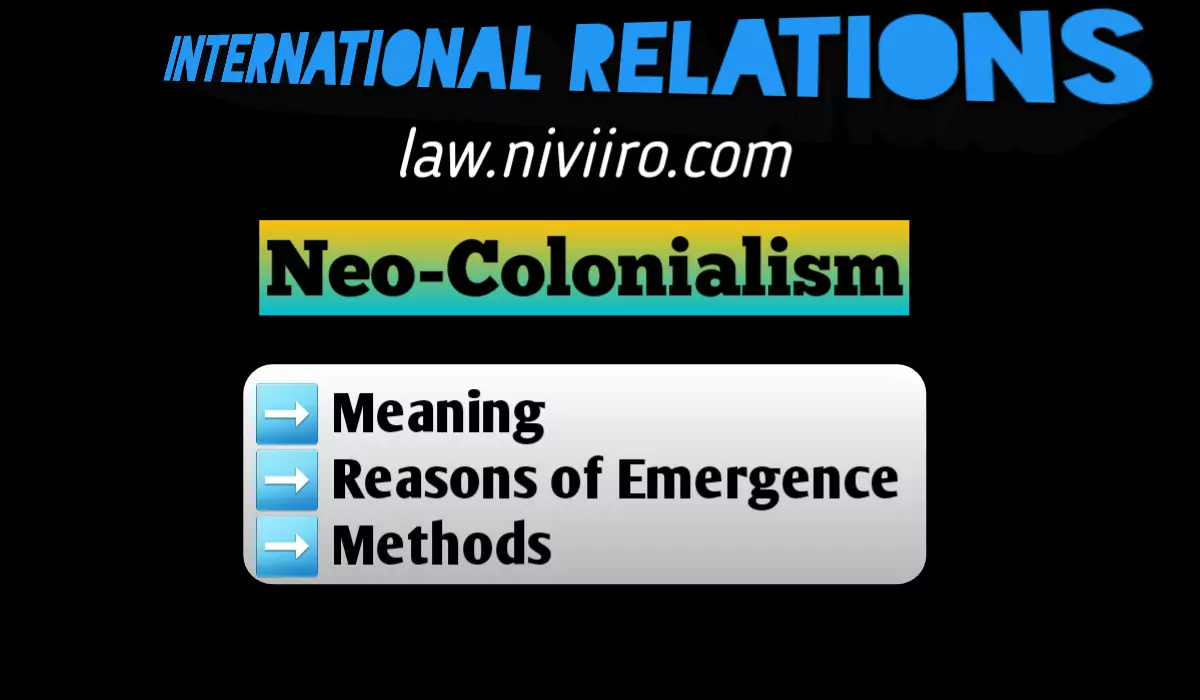There are several emerging trends in international relations that are shaping the current global political landscape. Here are a few:
1. End of European supremacy
Europe was the richest continent both before and after the Second World War, and it was a portion of India. There were colonies from Europe everywhere. At the time, it was a supreme continent, but due to their fighting in the Second World War, its health deteriorated and they bore the economic losses. Britain’s attention turned to the US and USSR, giving India the chance to improve its circumstances.
2. End of imperialism & colonialism
Second World War advantages are used by colonies. They gradually began a strong independent movement. Following the Second World War, numerous states gained their independence from colonialism. These independent nations also began to participate in international organisations like the UN.
3.The dawn of the nuclear era.
USA used the atomic bomb on Japan for the first time in 1945. The cold war was caused by the divide between the US and USSR.
4. Coming of Cold War
Germany’s withdrawal from the war brought it to an end. But the Cold War between the USA and USSR began after World War Two. Although they differ greatly, ideological disagreements predominate.
5. The emergence of independent states around the globe
Due in great part to Europe becoming its colonies independent after the Second World War, national movements for independence were initiated by European colonies. This has caused the number of sovereign states to grow quickly.
6. The spread of communism
The Soviet Union’s communism caused problems for European nations during World War II, and they opposed it spreading there.
7. Neo-Colonialism
Numerous nations transformed into economic colonies, such as China, which turned Sri Lanka into one.
8. Military alliance
Following the Second World War, new military alliances began to form. The United States established NATO in 1949 with the goal of defending countries against communism, and the Soviet Union countered it by creating the Warsaw Pact in 1955. Military groups SEATO and CENTO were also established in 1945 and 1955, respectively.
9. Non-Alignment | Emerging trends in international relations
Several countries gained independence after World War Two. These countries made the decision not to ally with the US and the USSR. After World War II, the globe was split into the USA and the USSR, and many nations made the decision to avoid them and join the NAM in order to have an independent foreign policy and to ease the stress brought on by the bipolar world.
10. decrease in the number of supreme powers
There were numerous superpowers in existence prior to World War II, however these superpowers’ memberships declined as a result of the war. Their economy deteriorated, and only the US and the USSR remained as superpowers.
11. The North-South Divide | Emerging trends in international relations
War between nations of the Northern and Southern Hemispheres. As the majority of the southern countries are developing and the northern countries are mostly developed, tensions are now arising as developing nations speak out for their rights.
12. Bipolar to multipolar transition
During the Second World War, there was only one superpower, but as time went on, more and more powerful nations appeared as more and more nations possessed military strength, nuclear power, and other forms of power.
13. The relevance of the third world is rising
Third-world nations were important because they participated in conventions, treaties, organisations, etc., and had a significant influence on global concerns.
14. Growing the UN family
When more countries joined the UN, its goal kept growing. When the UN was founded in 1945, there were only 51 members. Over time, new members were added, and today there are 193 nations. The UN today performs tasks including disease eradication, disaster relief, and other tasks in addition to peacekeeping duties.
15. Privatization, globalisation, and liberalisation
Numerous economic changes occurred after the Cold War as a result of the USA’s emergence as a superpower, the USSR’s disintegration, and the rise of capitalism, which forced them to liberalise their policies and embrace globalisation.
16. International terrorism
After the 1990s, terrorism started to have an impact on the world. Because of terrorism countries relations with each other affected. It is not concentrated or focused at a place it affect all Nation. Consider the 2001 attack on the World Trade Center in the USA.
Related Post | Emerging trends in international relations
Emerging trends in international relations ?
1. End of European supremacy
Europe was the richest continent both before and after the Second World War, and it was a portion of India. There were colonies from Europe everywhere. At the time, it was a supreme continent, but due to their fighting in the Second World War, its health deteriorated and they bore the economic losses. Britain’s attention turned to the US and USSR, giving India the chance to improve its circumstances.
2. End of imperialism & colonialism
Second World War advantages are used by colonies. They gradually began a strong independent movement. Following the Second World War, numerous states gained their independence from colonialism. These independent nations also began to participate in international organisations like the UN.
Reference Books | Emerging trends in international relations
- J.C. Johari – International Politics
- International Relations in the 21st Century by Pant
- Prem Arora – International Relations and foreign policy
- Raymond Aron – Peace and war a theory of International Relations
- H.J. Morgantheau – Politics among Nations
- An Introduction to International Relations by John Baylis, Steve Smith and Patricia Owens.

















